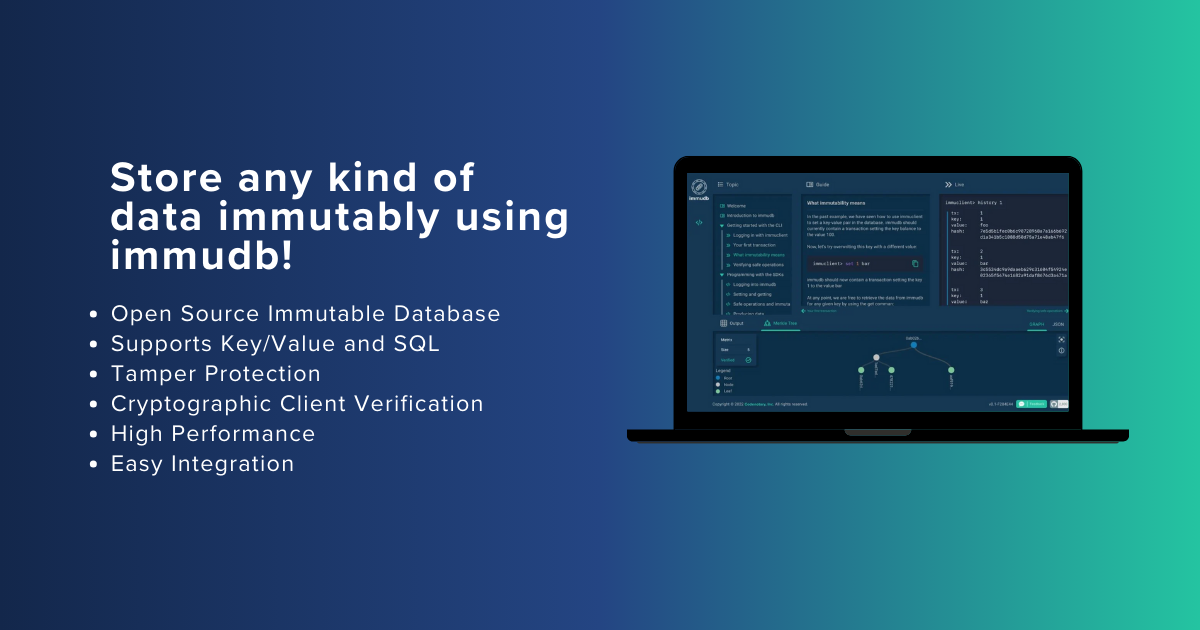Leveraging Microsoft Excel for Querying Databases
Introduction Microsoft Excel stands out as a powerful tool for data analysis and manipulation, commonly used by ...
Introduction
Microsoft Excel stands out as a powerful tool for data analysis and manipulation, commonly used by auditors and analysts. While its association with spreadsheets and calculations is well-known, Excel's potential for querying databases, such as the immudb immutable database, remains a less explored feature. In this post, we delve into the process of utilizing Excel to execute queries on immudb, shedding light on the advantages this integration brings.
-1.jpg?width=6912&height=3456&name=Brown%20Peach%20Illustrative%20GreetingsSlogans%20Banner%20Landscape%20(5)-1.jpg)
Understanding immudb
immudb, an open-source, high-performance immutable database, guarantees cryptographic proof of data integrity. Tailored for secure and efficient storage and querying of substantial data volumes, immudb has become popular among auditors and data analysts. Its unique features, such as data immutability and time travel functionality, set it apart in the database landscape.
Connecting immudb and Excel
To initiate a connection between immudb and Excel, leverage the existing ODBC connector in Excel, configuring it with immudb settings. Creating an ODBC DSN using the PostgreSQL driver, network address, default database, and valid user credentials is the initial step. After setting up the connection, Excel's Power Query feature comes into play, providing a seamless interface for querying immudb using SQL-like syntax.
-
Establishing the Connection:
- Open Excel and navigate to the "Data" tab.
- Click on "Get Data" and select "From Other Sources."
- Choose "From ODBC" and select the immudb DSN.
- Click "OK" to establish the connection.
-
Querying immudb with Power Query:
- Utilize the Power Query Editor in Excel for building and executing queries.
- Execute SQL-like commands, including SELECT, INSERT, UPDATE, and DELETE.
- Preview query results before loading them into Excel for further analysis.
.jpg?width=6912&height=3456&name=Brown%20Peach%20Illustrative%20GreetingsSlogans%20Banner%20Landscape%20(3).jpg)
Data Analysis with Excel
Once queried from immudb's transactional database, Excel empowers auditors and data analysts to perform data verification tasks and generate insightful reports. The seamless integration of Excel with immudb provides several advantages:
-
Data Immutability and Time Travel:
- immudb's immutable nature allows auditors and analysts to query transaction logs or banking ledgers confidently.
- Time Travel feature enables tracking changes in data fields over time, offering a historical perspective.
-
Familiar Interface and User-Friendly Experience:
- Excel's interface provides accessibility for users with varying technical expertise.
- Users already familiar with Excel find it easier to work with and analyze data.
-
Data Manipulation and Analysis:
- Excel's robust features enable users to filter, sort, and perform calculations efficiently.
- The platform facilitates quick and effective data analysis.
-
Visualization and Flexibility:
- Various charting and graphing options in Excel aid in visualizing data trends.
- Flexibility to customize and format data according to specific needs.
-
Collaboration and Integration:
- Collaboration features in Excel support simultaneous work on the same spreadsheet.
- Integration with external tools and systems for importing and exporting data enhances collaboration.
-
Accessibility Across Platforms:
- Excel files are easily shared and accessed on different platforms and devices.
- Convenient for users to query and analyze data on the go.

Conclusion
In conclusion, the integration of Microsoft Excel with the immudb immutable database proves advantageous for auditors and data analysts. Leveraging Excel's familiar interface, powerful features, and seamless integration capabilities, users can efficiently query, analyze, and visualize data from immudb, ensuring data integrity and facilitating collaborative data-driven decision-making.